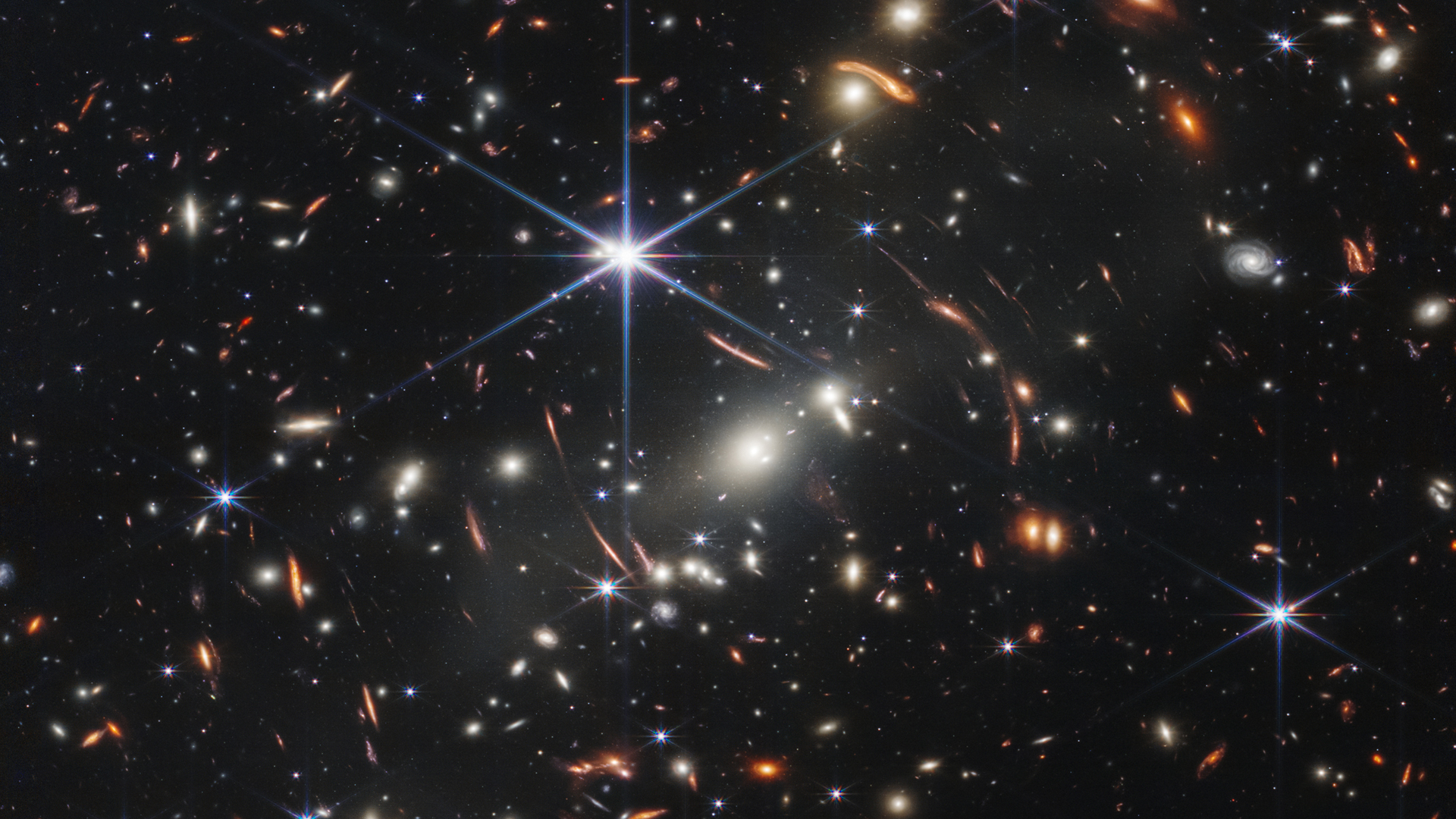James Webb Space Telescope reveals stellar 'clumps' from the most distant universe
With a little help from nature, the James Webb Space Telescope reveals clumps of stars nearly as old as the universe itself.

Through the combined powers of NASA's James Webb Space Telescope and nature's own magnifying tool, gravitational lenses, astronomers can observe the earliest stages of galaxy formation in a time when the universe was less than 1 billion years old.
Gravitational lensing is an effect caused by the bending of light in the vicinity of extremely massive objects, such as black holes or, in this case, enormous clusters of galaxies. Taking advantage of the magnifying effect of the galaxy cluster SMACS 0723, which is 4.6 billion light-years away from Earth, scientists were able to view even more distant galaxies in the cluster's background.
The image of the SMACS 0723 cluster used in this study may look familiar to you as it was one of the first images obtained by the James Webb Space Telescope to be released to the public last July. Dubbed Webb's first deep field, the image reveals several of these lensed, background galaxies, the oldest of which is more than 13 billion years old. Astronomers estimate that this galaxy formed only about 680 million years after the Big Bang.
Related: The James Webb Space Telescope's 1st photos
In and around those ancient galaxies, astronomers found clumps of stars, a sort of galactic embryos, which represent the earliest stages of galaxy formation and reveal how galaxies evolved and grew in the first hundreds of millions of years after the universe's birth.
"The images from the James Webb Space Telescope show that we can now detect very small structures inside very distant galaxies and that we can see these clumps in many of these galaxies," Angela Adamo, an astronomer at Stockholm University in Sweden and one of the lead authors of the study, said in a statement. "The telescope is a game-changer for the entire field of research and helps us understand how galaxies form and evolve."
The researchers added in the statement that studying such distant stellar clumps was impossible before.
Breaking space news, the latest updates on rocket launches, skywatching events and more!
The study was published in the journal Monthly Notices of the Royal Astronomical Society last month.
Follow Tereza Pultarova on Twitter @TerezaPultarova. Follow us on Twitter @Spacedotcom and on Facebook.

Tereza is a London-based science and technology journalist, aspiring fiction writer and amateur gymnast. Originally from Prague, the Czech Republic, she spent the first seven years of her career working as a reporter, script-writer and presenter for various TV programmes of the Czech Public Service Television. She later took a career break to pursue further education and added a Master's in Science from the International Space University, France, to her Bachelor's in Journalism and Master's in Cultural Anthropology from Prague's Charles University. She worked as a reporter at the Engineering and Technology magazine, freelanced for a range of publications including Live Science, Space.com, Professional Engineering, Via Satellite and Space News and served as a maternity cover science editor at the European Space Agency.
